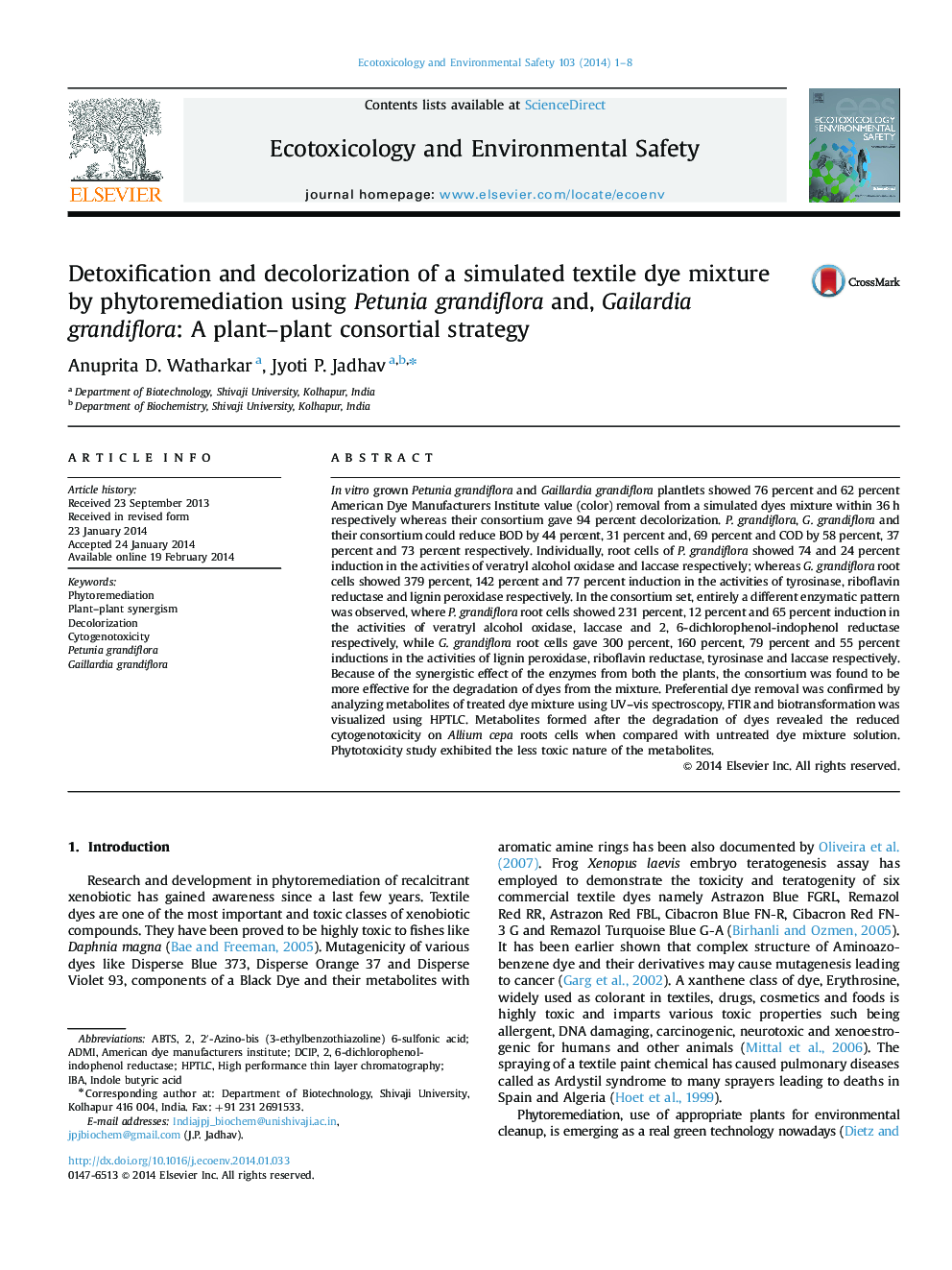| کد مقاله | کد نشریه | سال انتشار | مقاله انگلیسی | نسخه تمام متن |
|---|---|---|---|---|
| 4420187 | 1618960 | 2014 | 8 صفحه PDF | دانلود رایگان |

• In vitro consortium of P. grandiflora and G. grandiflora degraded a dye mixture.
• Consortium was found to be more efficient than the individual cultures.
• Enzymes from both plants acted in synergism in the developed consortium.
• BOD and COD of the dye mixture was reduced up to 69 percent and 73 percent respectively.
• Toxicity study revealed the nontoxic nature of the dye mixture metabolites.
In vitro grown Petunia grandiflora and Gaillardia grandiflora plantlets showed 76 percent and 62 percent American Dye Manufacturers Institute value (color) removal from a simulated dyes mixture within 36 h respectively whereas their consortium gave 94 percent decolorization. P. grandiflora, G. grandiflora and their consortium could reduce BOD by 44 percent, 31 percent and, 69 percent and COD by 58 percent, 37 percent and 73 percent respectively. Individually, root cells of P. grandiflora showed 74 and 24 percent induction in the activities of veratryl alcohol oxidase and laccase respectively; whereas G. grandiflora root cells showed 379 percent, 142 percent and 77 percent induction in the activities of tyrosinase, riboflavin reductase and lignin peroxidase respectively. In the consortium set, entirely a different enzymatic pattern was observed, where P. grandiflora root cells showed 231 percent, 12 percent and 65 percent induction in the activities of veratryl alcohol oxidase, laccase and 2, 6-dichlorophenol-indophenol reductase respectively, while G. grandiflora root cells gave 300 percent, 160 percent, 79 percent and 55 percent inductions in the activities of lignin peroxidase, riboflavin reductase, tyrosinase and laccase respectively. Because of the synergistic effect of the enzymes from both the plants, the consortium was found to be more effective for the degradation of dyes from the mixture. Preferential dye removal was confirmed by analyzing metabolites of treated dye mixture using UV–vis spectroscopy, FTIR and biotransformation was visualized using HPTLC. Metabolites formed after the degradation of dyes revealed the reduced cytogenotoxicity on Allium cepa roots cells when compared with untreated dye mixture solution. Phytotoxicity study exhibited the less toxic nature of the metabolites.
Journal: Ecotoxicology and Environmental Safety - Volume 103, May 2014, Pages 1–8